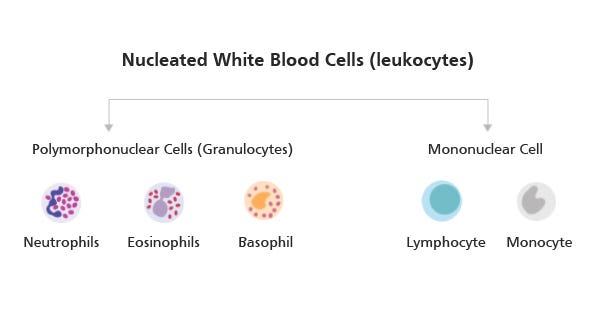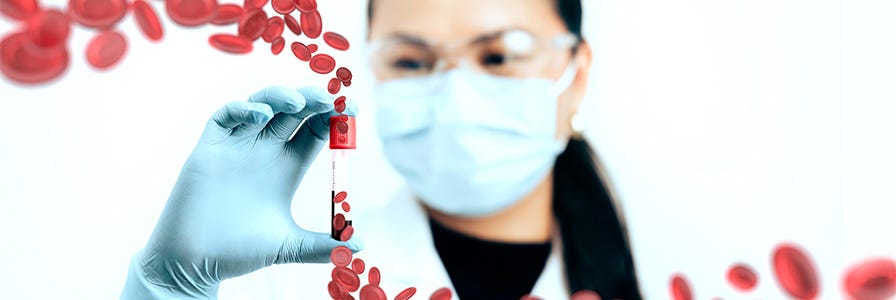How to Prepare a Polymorphonuclear Cell Fraction from Whole Blood Using Ammonium Chloride Lysis
How to isolate polymorphonuclear cells from whole blood using density gradient centrifugation followed by treatment with Ammonium Chloride Solution for RBC lysis
Whole blood is composed of plasma, red blood cells (RBCs or erythrocytes), platelets, and nucleated white blood cells, also referred to as leukocytes. Leukocytes can be further categorized into polymorphonuclear cells, also known as granulocytes, and mononuclear cells. The isolation of polymorphonuclear cells from whole blood is essential for studying neutrophils, eosinophils, basophils, and mast cells.
This protocol describes how to isolate polymorphonuclear cells from whole blood using density gradient centrifugation followed by treatment with Ammonium Chloride Solution for RBC lysis. To learn more about cell isolation from blood, see our guide Everything You Need to Know About Cell Isolation.
Materials
- Whole blood containing anticoagulant*
- Centrifuge tube (e.g. Falcon® Round-Bottom Polystyrene Tubes, 5 mL, Catalog #38007, Falcon® Round-Bottom Tubes, 14 mL, Catalog #38008, or Falcon® Conical Tubes, 50 mL, Catalog #38010)
- Lymphoprep™ (Catalog #18060)
- Dulbecco's Phosphate Buffered Saline with 2% Fetal Bovine Serum (PBS + 2% FBS, Catalog #07905)
- Ammonium Chloride Solution (Catalog #07800)
*Certain products are only available in select territories. Please contact your local Sales representative or the Product & Scientific Support team at techsupport@stemcell.com for further information.
Protocol
- Add Lymphoprep™ to a centrifuge tube. Refer to Table 1 for recommended volumes for various tube sizes.
Table 1. Recommended Volumes and Tube Sizes
Blood (mL)PBS + 2% FBS (mL)Lymphoprep™ (mL)Tube Size (mL)111.552231433314444145510501010155015151550
- Dilute whole blood with an equal amount of Dulbecco's Phosphate Buffered Saline with 2% Fetal Bovine Serum (PBS + 2% FBS), or other suitable culture medium.
- Layer diluted blood on top of Lymphoprep™, being careful to minimize mixing of blood with Lymphoprep™.
- Centrifuge at 800 x g for 20 minutes at room temperature (15 - 25°C) with the brake off.
- Remove and discard the plasma layer, the band of mononuclear cells, and Lymphoprep™, leaving the red blood cell (RBC)/granulocyte pellet intact.
Optional: At this point the pellet may be transferred to a new tube in order to avoid contamination by remaining mononuclear cells left in the tube. - Add Ammonium Chloride Solution to the RBC pellet, completely filling the tube. Incubate on ice for 10 minutes.
- Centrifuge at 300 x g for 10 minutes at room temperature with the brake set to low.
- Remove and discard the supernatant. Add PBS + 2% FBS to resuspend the pellet, then centrifuge at 120 x g for 10 minutes at room temperature with the brake off.
- Remove and discard the supernatant. Resuspend the resulting polymorphonuclear cells in appropriate medium (e.g. PBS + 2% FBS).
Lymphoprep™ is a trademark of Alere Technologies.
Request Pricing
Thank you for your interest in this product. Please provide us with your contact information and your local representative will contact you with a customized quote. Where appropriate, they can also assist you with a(n):
Estimated delivery time for your area
Product sample or exclusive offer
In-lab demonstration






